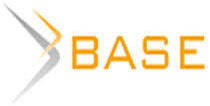Use of radio frequency identification systems (RFID) in library services (based on experience of the Scientific Library of the National Research Tomsk State University)
The article discusses the processes of introduction and application of radio frequency identification systems (RFID) in library services. RFID is used for automatic identification and accounting of objects. In recent years, promising radio frequency identification technologies have been used in libraries in the Russian Federation. The article examines the experience of the Scientific Library of the National Research Tomsk State University. The purpose of this article is to identify the features of the introduction, application and future prospects of radio frequency identification in the Scientific Library of the National Research Tomsk State University (SL TSU). The introduction of RFID in the SL TSU was handled by the Russian limited liability company Bibliotheca, which previously had a successful cooperation in the supply of anti-theft gates. Part of the operational fund was equipped with RFID tags. In 2019, a self-service terminal was installed that allows readers to independently interact with the operational fund using the RFID technology. So far, the SL TSU does not have appropriate resources to equip the entire fund with radio frequency tags. Therefore, bar coding will remain an indispensable tool for inventory and registration in the internal database in the near future. The management of the Scientific Library plans to go further and, in addition to automating the delivery of books, introduce a recommendation service that will analyze the preferences of the visitor after the return of the book, and then display appropriate recommendations on the tableau regarding possible options for those publications that may appeal to them. The article makes a suggestion to the management of the SL TSU about the need to supply the entire active fund with RFID tags. The authors of the article consider all books that have a high demand among readers to be an active fund. In addition, it is necessary to create a database adjacent to the fund, which will reflect all its diversity. As such, the database is already available, but here we are talking about the need to label all the fund we are interested in and add the relevant information contained in the RFID tags. This could significantly simplify and speed up the inventory process. This measure will simplify the reading process: you can simply take the data collection terminal with the inventory loaded into it and read all the tags from the inventory item. Thanks to RFID technology, inventory time is reduced by 10 times. After all, unlike paper technology or bar coding, in this case, there is no need to check each product – just go next to the label and the reader will already receive a signal from it. One of the problems that remains relevant is the need for appropriate funding.
Morev V. A., Timoschuk M. O. (2020), Use of radio frequency identification systems (RFID) in library services (based on experience of the Scientific Library of the National Research Tomsk State University). Research Result. Business and Service Technologies, 5(2), 47-56, DOI: 10.18413/2408-9346-2020-6-3-0-5
















While nobody left any comments to this publication.
You can be first.
About company Bibliotheca, Bibliotheca [Online], available at: http://bibliotheca.ru/ru/ourbusiness/who-we-are/ (Accessed 14 June 2020).
Abrosimova, N.V. (2013), “RFID technologies: experience in implementation and use”, Information and analytical journal “University book”, 4, [Online], available at: http://www.unkniga.ru/innovation/tehnology/1492-tehnologii-rfid-opyt-vnedreniya.html (Accessed 13 June 2020).
Bondarevskij, A.S. and Zolotov, R.V. (2009), “Historiography of radio frequency identification (RFID) – Russian roots”, Modern knowledge-intensive technologies, 8, pp. 11–15, [Online], available at: http://top-technologies.ru/ru/article/view?id=25531 (Accessed 02 June 2020).
Fjodorov, M.S. (2006), “Standards and trends in the development of RFID technologies”, Components and technologies, 8, pp. 108–110.
Girina, S.V. (2015), These enticing RFID technologies… or a Few words about the introduction of new technologies in the practice of Perm libraries, [Online], available at: http://biblioteki.perm.ru/files/files/Ati_zamancivie_RFID-tehnologii.pdf (Accessed 27 June 2020).
Ignatova, E.S. and Petrova, N.A. (2016), “Experience in using RFID technologies in the activities of the Scientific Library of the University (on the example of the Scientific Library of Perm State National Research University)”, [Online], available at: URL: https://lib.nspu.ru/info/prof-info/professionalnye-events/%D0%98%D0%B3%D0%BD%D0%B0%D1%82%D0%BE%D0%B2%D0%B0.pdf (Accessed 27 June 2020).
Koigerov, A.S., Zabuzov, S.A. and Dmitriev, V.F. (2009), “Investigation of the correlation method for solving the problem of anticollision for radio frequency identification systems on surfactants”, Information and control systems, 5(42), pp. 48–55.
Makhmutzjanov, R.R., Tokarev, D.N. and Kochergov, D.S. (2017), “Application of radio frequency identification in the process control of a drilling company”, Gas Industry, 5 (752), pp. 14-17.
Markina, O.G. (2014), “RFID technologies in the library's activities”, Official website of Derzhavin Tambov State University,[Online], available at: http://www.tsutmb.ru/nayk/nauchnyie_meropriyatiya/int_konf/vseross/i_vserossijskaya_nauchnaya_studencheskay/rfid_texnologii_v_deyatelnosti_biblioteki (Accessed 10 June 2020).
Marking of drilling rig and TORO equipment, GoRFID [Online], available at: https://go-rfid.ru/rfid-proekti/proekti-promishlennost/markirovka-i-toro-gazprom-burenie (Accessed 18February 2020).
Plotnikov, A.M. (2012), Razrabotka i sovershenstvovanie system radiochastotnoj identifikatsii obshhego i spetsial’nogo naznachenija [Development and improvement of General and special purpose radio frequency identification systems], autoref. diss. ... cand. tech. sciences, Samara, 19 p.
RFID technology in libraries, Overview of the experience of implementing RFID technology in Russian libraries, G-LBPT1019_-_LibrarySystemOverview [Online], available at: http://www.lib.tsu.ru/win/metod/prezentacii/2015_02_06_Bibliotheca.pdf (Accessed 15 June 2020).
Scientific Library switches to RFID service technology, National Research Tomsk State University, [Online], available at:http://www.tsu.ru/news/nauchnaya-biblioteka-perekhodit-na-rfid-tekhnologi/ (Accessed 26 June 2020).
Sharov,V.S. (2005), “Radio frequency identification technology”, Byte. 12 (88), [Online], available at:https://www.bytemag.ru/numbers/index.php?ID=11537 (Accessed 27 June 2020).
Timoschuk, M.O. Interview with L.I. Volkova, Deputy Director for library technologies, coordination of work of departments in the areas of Scientific Library of the National Research Tomsk State University. 23.12.2019, Personal archive of the author.
Using of RFID in libraries, The company RealTrac [Online], available at: https://real-trac.com/ru/company/blog/ispolzovanie_rfid_v_bibliotekah/ (Accessed 27 June 2020).
Vasilyev, R.A. and Nikolaev, D.B. (2016), “Analyzing the possible use of voice identification in the systems of access to information”, Science Result. Information Technologies Series. 1. pp. 48–57, [Online], available at: https://globalf5.com/Zhurnaly/Informatika/Nauchiy-rezultat-Informacionnie-texnologii/vypusk-2016-1 (Accessed 09 June 2020).
Vasilyeva, S.V. (2016), “From e-services to the smart library”, Information and analytical journal “University Book”. 10, pp. 45-49, [Online], available at: http://www.unkniga.ru/biblioteki/vuzbiblio/6713-ot-e-servisov-k-smart-biblioteke.html (Accessed 27 June 2020).